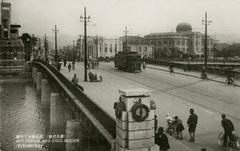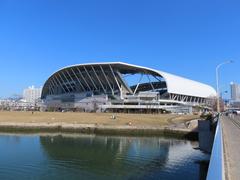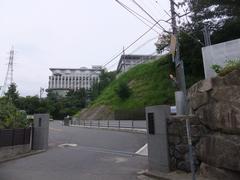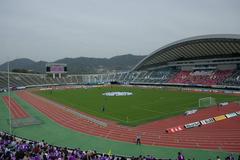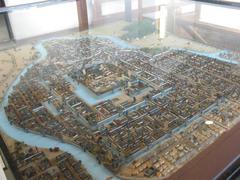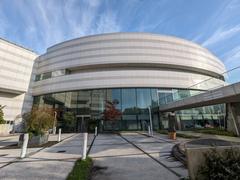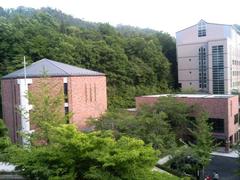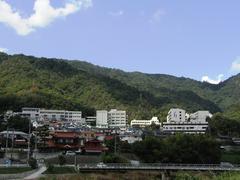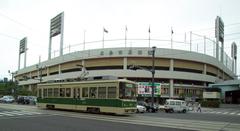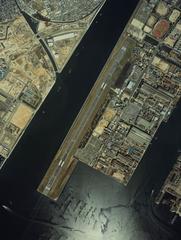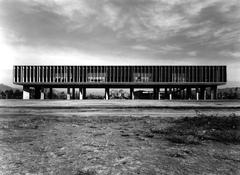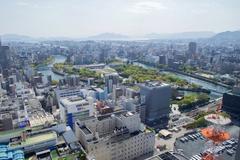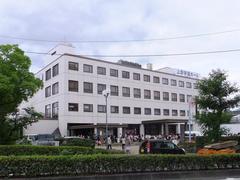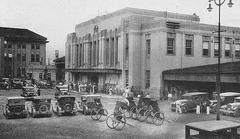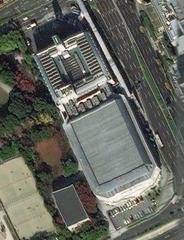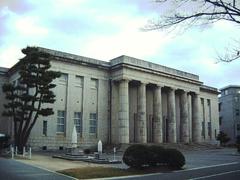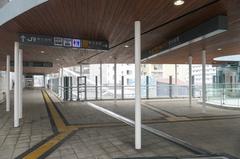
Jōhoku Station Hiroshima: Visiting Hours, Tickets, and Travel Guide
Date: 04/07/2025
Introduction to Jōhoku Station in Hiroshima
Jōhoku Station (城北駅), located in the heart of Hiroshima, Japan, serves as a vital hub for both residents and visitors. Positioned on the Hiroshima Electric Railway’s Hakushima Line and the Astram Line rapid transit system, the station is not only a gateway to Hiroshima’s profound historical sites but also a symbol of the city’s resilience and cultural revival. Established during Hiroshima’s early modernization in the 20th century, Jōhoku Station witnessed the city’s transformation from a feudal stronghold to a beacon of peace and recovery after World War II (city.hiroshima.lg.jp; Japanese Trains).
Strategically situated near major attractions such as Hiroshima Castle, Shukkeien Garden, and the Hiroshima Peace Memorial Park, Jōhoku Station is designed for traveler convenience, featuring accessible facilities, multilingual signage, and a variety of ticketing options including IC cards and tourist passes. The surrounding area offers seasonal festivals, cultural workshops, and authentic local cuisine, providing an immersive experience for every visitor (Explore Hiroshima; Dive! Hiroshima).
This guide delivers comprehensive information on Jōhoku Station’s hours, ticketing, accessibility, nearby historical sites, and practical travel tips. Whether you are a history buff, cultural explorer, or casual tourist, understanding Jōhoku Station’s significance will enrich your Hiroshima journey (worldbank.org).
Table of Contents
- Introduction
- Early Development of Hiroshima’s Urban Rail Network
- Visiting Hours and Ticket Information
- Accessibility and Visitor Amenities
- Historical and Urban Significance
- Exploring Nearby Hiroshima Historical Sites
- Architectural Features and Urban Landscape
- Seasonal Events and Local Festivals
- Culinary and Shopping Experiences
- Cultural Context and Local Life
- Practical Visitor Tips
- Notable Side Trips
- Immersive Experiences
- FAQs About Jōhoku Station
- Conclusion
Early Development of Hiroshima’s Urban Rail Network
Jōhoku Station has played an integral role in Hiroshima’s modernization since the early 1900s. The introduction of electric streetcars in 1912 by Hiroshima Electric Railway Co., Ltd. marked a significant transition from horse-drawn carriages to efficient electric trams, greatly enhancing urban connectivity (city.hiroshima.lg.jp). The Hakushima Line, where Jōhoku Station is located, facilitated expansion north of Hiroshima Castle, driving both residential and commercial growth.
Visiting Hours and Ticket Information
Jōhoku Station is open daily, with operations typically from 5:30–6:00 AM until midnight, depending on the line and day. Ticket options include:
- Single-ride tickets: Starting around 170–260 yen, available at ticket machines and from streetcar conductors.
- IC Cards: Accepted cards such as ICOCA and Suica streamline travel on Hiroshima’s transit network.
- Tourist Passes: Special day passes for unlimited streetcar rides are available, ideal for sightseeing (Japanese Trains).
Accessibility and Visitor Amenities
Jōhoku Station prioritizes accessibility:
- Barrier-free facilities: Elevators, ramps, tactile paving, and accessible restrooms.
- Signage: Multilingual (Japanese/English) for easy navigation.
- Amenities: Coin lockers, convenience stores, and helpful staff at tourist information counters.
All major attractions accessible from Jōhoku Station also offer accessible pathways and facilities for visitors with mobility needs.
Historical and Urban Significance
Prewar and Postwar Transformation
Located near the Ota River and Hiroshima Castle, Jōhoku Station’s setting reflects Hiroshima’s evolution from a feudal castle town to a modern metropolis. After the atomic bombing in 1945, the city resumed partial streetcar service within days—a testament to its resilience (japambience.com). Postwar reconstruction, including the Motomachi Redevelopment Project, integrated Jōhoku Station into a revitalized cityscape focused on peace and community (worldbank.org).
Contemporary Role and Connectivity
Today, Jōhoku Station is a crucial link between Hiroshima Station, the city center, and major cultural landmarks. It interfaces seamlessly with the Astram Line, streetcars, and bus routes, making it easy to explore both central and outlying districts (city.hiroshima.lg.jp).
Exploring Nearby Hiroshima Historical Sites
Jōhoku Station offers easy access to several must-visit locations:
- Hiroshima Castle (Carp Castle): Open daily 9:00 AM–6:00 PM (last entry 5:30 PM). Admission: 370 yen/adults, 180 yen/children. Walkable from the station (Explore Hiroshima).
- Shukkeien Garden: Open daily 9:00 AM–6:00 PM (last entry 5:30 PM). Admission: 260 yen/adults, 150 yen/children. A scenic stroll from Jōhoku Station (Explore Hiroshima).
- Hiroshima Peace Memorial Park & A-Bomb Dome: Free entry; museum charges 200 yen/adult. Park open 24 hours; museum 8:30 AM–6:00 PM (seasonal variations). Accessible via tram/bus (Japan Activity).
- Mitaki-dera Temple: Open 8:30 AM–4:30 PM. Admission 300 yen/adult. Popular for autumn foliage (Explore Hiroshima).
- Mazda Museum: Free guided tours by reservation (Explore Hiroshima).
Architectural Features and Urban Landscape
Jōhoku Station’s design is functional yet harmonious with its urban surroundings, featuring sheltered platforms and integration with nearby green spaces like Hiroshima Castle Park. The station supports Hiroshima’s sustainable mobility goals with pedestrian and cycling infrastructure (worldbank.org).
Seasonal Events and Local Festivals
- Tōkasan Yukata Festival (June): Traditional dance, food stalls, and summer festivities (GetHiroshima).
- Hiroshima Peace Memorial Ceremony (August 6): Lantern floating and peace events at Peace Memorial Park (Japan Travel).
- Cherry Blossom Viewing: Late March–April at Shukkeien Garden and Hiroshima Castle (Japan Guide).
- Autumn Foliage: November events in local gardens (Japan Activity).
Culinary and Shopping Experiences
- Okonomimura: Multi-floor food complex specializing in Hiroshima-style okonomiyaki. Open 11:00 AM–9:00 PM (Explore Hiroshima).
- Hondori Shopping Street: Pedestrian arcade with shops, cafes, and street food. Open 10:00 AM–8:00 PM.
Cultural Context and Local Life
Hiroshima’s commitment to peace and cultural revival is deeply felt around Jōhoku Station. Annual festivals, the presence of educational institutions, and vibrant neighborhoods provide authentic experiences for visitors. The city’s postwar philosophy—advocating for nuclear disarmament and community resilience—shapes everyday life and local events (Explore Hiroshima).
Practical Visitor Tips
- Transport: Jōhoku Station connects to Hiroshima Station and major city attractions via the Astram Line, streetcars, and buses (Japanese Trains).
- Accessibility: Elevators, tactile paving, and barrier-free pathways are available.
- Best Seasons: Visit in spring or autumn for ideal weather and beautiful scenery.
- Language: English signage is common, but a translation app is helpful.
- Safety: Hiroshima is safe and clean; remain vigilant in crowded areas (Nomadic Matt).
Notable Side Trips
- Miyajima Island: Home to Itsukushima Shrine’s floating torii. Accessible via train and ferry (Japan Specialist).
- Sandankyo Gorge: A scenic destination for hiking and boat rides (Explore Hiroshima).
Immersive Experiences
- Walking and Cycling Tours: Thematic tours focus on local history and neighborhoods (Nomadic Matt).
- Cultural Workshops: Tea ceremonies, calligraphy, and crafts at local venues (Dive! Hiroshima).
FAQs About Jōhoku Station
Q: What are Jōhoku Station’s hours?
A: Open daily, typically 5:30 AM–midnight.
Q: How do I buy tickets?
A: Use automated machines or IC cards such as ICOCA and Suica.
Q: Is the station accessible?
A: Yes—elevators, tactile paving, and accessible restrooms are available.
Q: Are guided tours available from Jōhoku Station?
A: While the station doesn’t offer tours, local operators provide guided visits to nearby sites.
Q: What is the best time to visit Hiroshima?
A: Spring and autumn for pleasant weather and festivals.
Visual Guide
Alt text is optimized for SEO: “Jōhoku Station map,” “Hiroshima Castle near Jōhoku Station,” “Atomic Bomb Dome Hiroshima.”
Summary and Final Tips
Jōhoku Station is more than a transit point—it is your entryway to Hiroshima’s living history, cultural heritage, and vibrant daily life. With excellent accessibility, direct links to major sites, and proximity to events and culinary hotspots, it’s the ideal starting point for exploring Hiroshima. Use public transport, take advantage of tourist passes, and plan your visit during spring or autumn for the best experience. For up-to-date information, download the Audiala app and consult official tourism channels.
References and Further Reading
- Jōhoku Station Hiroshima: Visiting Hours, Tickets, and Historical Significance, 2025, Hiroshima Electric Railway Co., Ltd. (city.hiroshima.lg.jp)
- Visiting Hiroshima Peace Memorial Park: Hours, Tickets, and Travel Guide, 2025, Hiroshima City Tourism (japambience.com)
- Jōhoku Station Visiting Hours, Tickets, and Nearby Hiroshima Historical Sites Guide, 2025, Japanese Trains (Japanese Trains)
- Jōhoku Station Visiting Hours, Tickets, and Seasonal Events | Hiroshima Historical Sites Guide, 2025, Dive! Hiroshima (Dive! Hiroshima)
- Hiroshima’s Postwar Urban Recovery and Land Readjustment, 2025, World Bank Tokyo Development Learning Center (worldbank.org)
- Hiroshima Peace Memorial Park Official Website, 2025 (city.hiroshima.lg.jp)
- Explore Hiroshima: Cultural and Historical Attractions, 2025 (Explore Hiroshima)
- Japan Activity: Hiroshima Landmarks and Events, 2025 (Japan Activity)
For further assistance, virtual tours, and real-time updates, explore the official Hiroshima tourism websites and the Audiala app.


